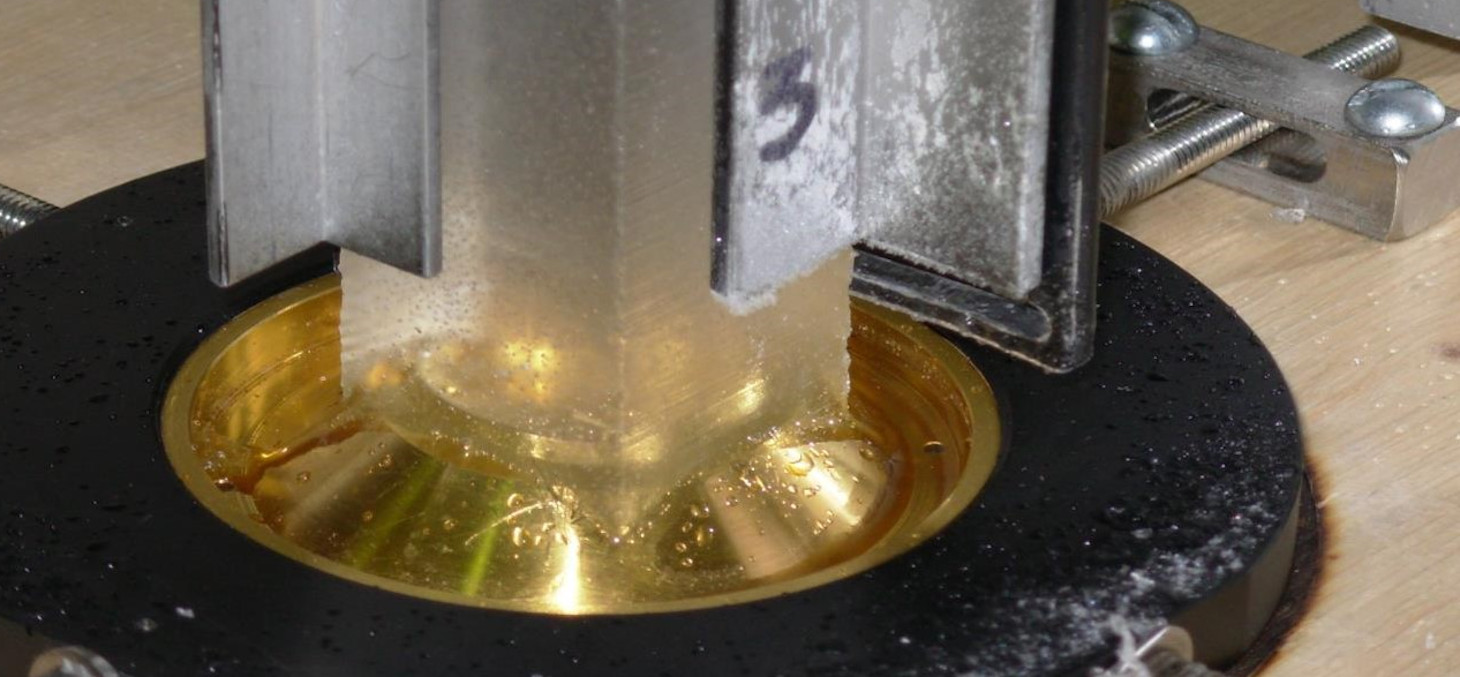
© Steph Candé - Panda Laboratory, IGE (UGA, CNRS, IRD), 2022
The objective of Ice Memory Foundation is to preserve glacial archives so that in the future researchers can conduct their own research programs on preserved ice cores with the new techniques and processes they will have developed.
Ice Memory is an ice core salvage and heritage initiative today, not a research program, aiming at providing ice samples and producing science tomorrow.
Ice Memory needs to feed an Ice Memory database with today's reference data, to enable pertinent sampling tomorrow.
Helping to drive science forward
The results will be shared within a database as detailed and exhaustive as possible. Open-access, this database will be useful for research by the current scientific community and it will also serve as a reference for future scientists.
This analysis phase will be performed by scientists involved in the Ice Memory Foundation in collaboration, if possible, with young researchers from those countries where ice cores have been extracted from in order to develop their skills.
To go further about Ice Core science:
Understanding past environments to anticipate future change: When drilling down through the glacier to bedrock, each of the layers of snow and ice that we pass through represents the state of the climate and the atmosphere over a successive period of years, and they are the only natural record of it that we have. The deepest layers are also the oldest, dating back from a century to a few millennia. Sometimes, at the base of these glaciers, you can even find layers formed during the Last Glacial Maximum approximately 20,000 years ago. Analysis of ice cores allows us to reconstruct past changes in the climate, the environment and in particular, the atmospheric composition: temperature variations, atmospheric concentrations of greenhouse gases, emissions of natural aerosols or man-made pollutants, etc. Ice offers a unique insight, especially when it comes to the increase in atmospheric pollution over the past century, by highlighting regional disparities as well as characterizing the origin of that pollution.
Today and Tomorrow
While, first and foremost, ice cores make it possible to build a timeline for the climate and environment archive that they represent, scientists are also able to take advantage of numerous tracers providing information on the state of the
environment and
climate. Their bet is that their successors will develop new ideas and techniques to enable the ice to reveal and
highlight new data.
Recording the environment
As layers of snow are deposited on the surface of a glacier, they record a wealth of information about the state of our environment. Made up almost entirely of water molecules, these snow layers also contain impurities, which sometimes represent just a few millionths of billionths of the mass of snow deposited.
These impurities may be solid, such as dust released by soils or deserts. As a result, Alpine glaciers contain dust-enriched layers originating from intense sandstorms in the Sahara Desert. This dust has crossed the Mediterranean Sea before being partly deposited on the surface of the glaciers. Successive layers of fresh snow then carry these layers of dust down into the icy depths. Among the solid particles, those released by human activities can also be found, such as heavy metal particles (e.g. lead, zinc, copper, platinum, rhodium, palladium, etc.).
The impurities may also be liquid. The term ‘aerosols’ is used to refer to tiny droplets comprising, for example, acids: sulphuric acid from coal combustion, nitric acid emissions from agricultural soils or the conversion of nitrogen oxides emitted by cars or heating sources, hydrofluoric acid emitted by certain industrial activities and organic acids resulting from natural emissions of organic compounds from plants, the burning of those plants or the burning of fossil fuels, etc.
Radioactive pollutants can also leave traces in high-altitude snow. Dissolved in snowflakes or attached to tiny clay particles carried by the wind, these pollutants are seen by diffusing an emission of beta or gamma radioactivity. Consequently, radioactive elements produced by thermonuclear tests conducted during the 1950s and 1960s can be found. Closer to home, the Chernobyl disaster also left its mark on the Alpine glaciers, causing a peak in caesium-137. Other naturally occurring radioactive elements can also be measured in the ice – for example, beryllium-10. It is an extremely rare element, with measurements showing only around 10,000 atoms per gram of ice. It is produced in the upper atmosphere from the interaction of solar wind with nitrogen molecules. Its presence in greater or lesser quantities gives us an insight into the quantity of snowfall over time, as well as changes in solar activity or the intensity of Earth’s magnetic field.
Recording the climate
The oxygen and hydrogen of the water molecules in snow come in different forms, known as ‘isotopes’, some of which are heavier than others. Accurately measuring the proportions of heavy and light isotopes in the water molecules offers a window to the temperature conditions or the amount of precipitation at the time the snow was deposited.
When the snow sinks deeper into the glacier, it is made denser by the weight of the successive layers above it. As it densifies, the porosity between the snow grains gradually decreases, trapping a sample of atmospheric air. In that gaseous fraction of the layers of ice, we can measure the concentration of trace gases. Such is the case with greenhouse gases: carbon dioxide, methane, nitrous oxide, chlorofluorocarbons, etc.
Upcoming New Discoveries
Ice core science is a young science. First emerging in the early 1960s, the resulting discoveries (such as the close connection between natural climate change and the amount of greenhouse gases in the atmosphere) were made possible thanks to advances in technology. This progress suddenly enabled the measurement of previously inaccessible chemical elements using new measuring instruments. The advancement of knowledge has led researchers to study signs present in the ice, a research domain where they had not embarked upon before then.
The language of ice has an extremely broad alphabet, and we continue to discover new letters. At present, nobody can yet accurately confirm what sort of discoveries lies in store for us within the ice archives. However, we can just about make out a few clues, one of which involves biology. While the snow layers lock away solid particles as they are deposited, they also contain living organisms such as bacteria and viruses attached to aerosols and particles and carried by the wind. Once deposited, these living organisms remain in the ice as frozen in time. With analysis techniques continuing to be developed, it is safe to predict that, one day, researchers will be able to study the change in the genome of such bacteria or viruses over time. Not only that, but also learn about the mechanisms which lead to the mutations found. Perhaps that ice core science will prove to serve medical research.




